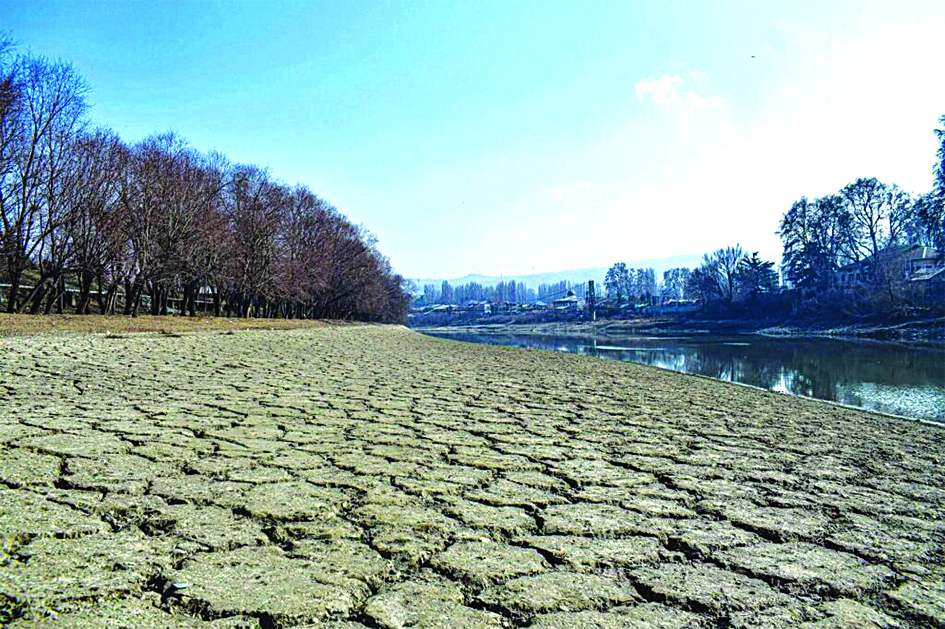 Early Times Report Early Times Report
Srinagar, Feb 2: Kashmir witnessing a snow deficit yet again this year is threatening the tourism sector and has created a fear that the Valley could face water scarcity in the summer months.
People associated with the tourism industry are worried. “January witnessing vey less snowfall led to the decline in the number of tourists visiting Kashmir. Visitors come to the Valley in winter to enjoy the snow but less snowfall has left them disappointed,” said a hotelier.
He said, “Last year also Kashmir didn’t get much snow and this year the situation has been somewhat the same. If the snow continues to elude Kashmir it can lead to an increase in temperature in the summer season that could keep the tourists away. The Valley is witnessing climate change and it’s hitting everyone hard .”
According to the details available with the Early Times, the year 2024 was the driest in the past five decades in Jammu and Kashmir. The rainfall levels in 2024 plunged to just 870.9 mm, a sharp 29 Tourists come to the Valley in winter to enjoy the snow but less snowfall has left them disappointed
The Valley is witnessing climate change and it’s hitting everyone hard .”
The 2024 was the driest years in the past five decades in Jammu and Kashmir.
At present Kashmir is completely dependent on the power being exported from other parts of the country.
The year 2024 marked the fifth consecutive year of below-normal precipitation in Jammu and Kashmir, amplifying concerns over water scarcity and its cascading effects on agriculture, hydropower, and daily life.
The changing weather patterns, according to the experts, have led to decline in the intensity of snowfall in Kashmir and its consequences are evident.
“The absence of snowfall led to the rise in the maximum temperatures in Kashmir in January month. The temperatures rise whenever the dry spell persists,” said an expert.
According to the media reports that due to water level declining in the major rivers across Kashmir, the Power Development Department (PDD) is currently able to produce only around 50 to 60 Megawatts (MWs) of electricity against the total capacity of around 250 MWs from the power plants. “At present Kashmir is completely dependent on the power being exported from other parts of the country as the local generation is very low.” | 